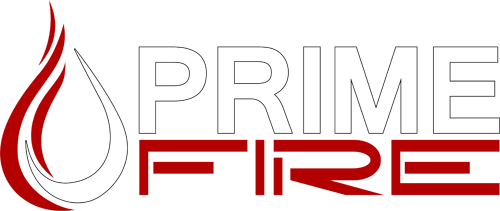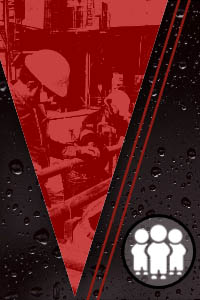Fire protection systems are complex and diverse. Here are some questions you may have about fire protection that we are asked regularly.
-
What is active fire protection?
Active fire protection is the component of fire protection in which fires are suppressed by means of motion or action. These measures attempt to eliminate fires and fire hazards as they occur rather than just containing them as is the case through passive fire protection. A sprinkler system or fire extinguisher are active methods of fire protection while fire resistant walls is an example of passive fire protection.
-
What is a fire pump?
A fire pump is a kind of pump in a fire protection system that takes water from the water supply in the system and increases the pressure in it in order to meet the hydraulic design requirements of that particular system.
The National Fire Protection Association (NFPA) standard 20: Standard for the Installation of Stationary Pumps for Fire Protection, protects life and property by providing requirements for the selection and installation of pumps to insure that systems will work as intended to deliver sufficient water in a fire situation.
-
Are there different types of fire pumps?
Yes, types of fire pumps include:
- Horizontal Split Case
- Vertical Split Case
- Vertical In-Line
- Vertical Turbine
- End Suction
-
What is a flow test?
A flow test, otherwise known as a water flow test, is a technique used to measure the water supply accessible to a building or structure for the purposes of putting in a water-based fire safety system. If the flow is too low a fire pump can be used to boost it.
NFPA 291: Recommended Practice for Fire Flow Testing and Marking of Hydrants is a document used by fire professionals to conduct water flow testing and marking of hydrants used for firefighting.
-
Why do I need a fire sprinkler system in my building?
According to the National Fire Protection Association (NFPA), buildings with a working fire sprinkler system see an average property loss and risk of death per fire that is 50 to 66 percent lower than buildings without sprinkler systems. Broken down by industry, civilian deaths in sprinklered buildings between 1989 – 1998 were reduced by:
- 60 percent for manufacturing properties
- 74 percent for stores and offices
- 75 percent for nursing homes
- 91 percent for hotels and motels
In addition, the average property damage per hotel or motel fire was 56% less in structures with fire sprinkler systems than without. The numbers above tell a compelling story. Fire sprinkler systems save money, and more importantly, save lives.
-
How do fire sprinkler systems work?
Most sprinkler heads contain a small bulb with a colored liquid inside. This bulb acts as a plug to prevent water from escaping out of the sprinkler. The heat from a fire causes this liquid to quickly expand. Once the pressure in the vial gets too high, the bulb bursts and releases the water behind it.
The liquid inside the bulbs comes in a variety of colors, and each color represents the temperature required to activate the sprinkler:
- Orange – 135°F
- Red – 155°F
- Yellow – 174°F
- Green – 200°F
- Blue – 286°F
- Purple – 360°F
- Black – 440°F
Since the fire sprinklers are activated by heat, there is no risk of accidental activation of your fire sprinkler system by smoke or dust in the air. That said, the bulbs are very fragile and any tampering could cause them to go off. If a sprinkler head gets accidentally knocked off (by a forklift, truck, repairman, etc.), there’s going to be lots and lots of water flowing through that sprinkler head until the system is shut down.
-
Are there different types of fire sprinkler systems?
Yes. The different types of sprinkler systems are pre-action, dry pipe, wet pipe, and deluge.
- Pre-action fire sprinkler systems are full of air and water is permitted to pass through when the smoke alarm or sensor is set off. These can be used so that sprinklers do not automatically go off in the case of a false alarm.
- Dry pipe fire sprinkler systems are similar to pre-action in that they do not contain water in the pipes. They contain pressurized air with is released in the case of a fire thus allowing the water to flow through the pipes. This can be useful in preventing pipes freezing in the winter.
- Wet pipe fire sprinklers are the most popular kind of fire sprinkler system. In these fire sprinklers, water is stored inside of the pipes and released when heat activates the sprinkler heads.
- Deluge sprinklers also contain water in the pipes at all times. The main difference between these sprinklers and wet pipe sprinklers is that these are not activated by heat but rather by a special fire alarm. These are rarely used.
-
Do I need a fire alarm system if I have a fire sprinkler system installed?
Yes. Even though fire sprinkler systems are highly effective fire protection systems, they only kick into gear after the fire has already started and the heat has risen to a certain level. Fire alarm systems detect the presence of fire before the flames start, giving you extra time to escape the building. They can also automatically alert the fire department.
-
How should I maintain my sprinkler system?
The most important thing to do to keep your fire sprinkler in good shape is to have it inspected by a Fire Protection professional once a year. Frequent fire sprinkler inspection will help catch any problems with your system so they don’t prevent it from operating properly in the future. In addition, fire sprinkler system maintenance will usually lower insurance premiums.
In terms of specific do’s and don’ts when it comes to your fire sprinkler:
Do:
- Test your fire sprinkler system monthly by opening the test valve and listening for an alarm bell.
- Know the location of the fire sprinkler system shutoff valve.
- Make sure the fire sprinkler system control valve stays open.
- Have your system reevaluated for needed upgrades when:
- Leave the building and contact the fire department as soon as possible after the fire sprinklers go off, even if it looks like the fire has already been put out.
Don’t:
- Paint the sprinklers.
- Damage sprinklers (report any damage immediately).
- Hang objects from any part of the system.
- Obstruct or cover the sprinklers.
-
How can I protect my fire sprinklers?
The best way to protect your fire sprinklers is just to make sure you don’t do anything that harms them. This can include painting them, hanging things from them, bumping them etc. Be sure to get your fire protection system inspected occasionally as well.
-
How does fire suppression work?
The purpose of automatic fire suppression is to extinguish fires with no human intervention. This requires the system to detect fires and deliver an extinguishing agent all on its own. Heat detectors and thermo-bulbs are conventional methods of fire detection. Then, pressurized fluid stored in nearby tanks flows through a release valve, into piping, and out of nozzles to douse the fire quickly and effectively.
Many different extinguishing agents besides water are available for fire suppression systems. Therefore, this type of fire protection is ideal for libraries, museums, data centers, server rooms, medical record rooms, engine compartments, control rooms, and other areas where water damage could be detrimental. Examples of fire suppression extinguishing agents include FM-200, high- and low-expansion foam, carbon dioxide, wet chemicals, and dry chemicals. The type you select depends on the application.
No matter what extinguishing agent you choose, the goal is the same—to disrupt the fire triangle. This is accomplished by either smothering the flames to cool them or cutting off the fuel source from oxygen.
-
What are the different types of fire extinguishers?
There are several different types of fire extinguishers for private use.
- The first and most commonly used fire extinguisher is dry chemical. Dry chemical fire extinguishers work by using chemicals to disrupt the fire’s chemical reaction primarily by cutting off the fire’s oxygen from being used as fuel.
- Another type is carbon dioxide fire extinguishers. These fire extinguishers work by simultaneously removing the oxygen and the heat with a cold expulsion.
- Water and foam fire extinguishers are yet another type of modern fire extinguisher. They work by separating the heat and oxygen from a fire.
- Wet chemical fire extinguishers are a much newer type of portable fire extinguisher. They are primarily used to extinguish fires in commercial kitchens which were previously one of the toughest types of fires to extinguish.
Other type of fire extinguishers includes clean agent, dry powder, water mist and cartridge operated dry chemical.
-
How do I use a fire extinguisher?
The proper way to use a fire extinguisher is to:
- Pull out the pin located in the handle.
- Aim the nozzle at the base of the fire – hitting the upper parts of the flames will be completely ineffective.
- Squeeze the lever located at the back of the handle in a slow and controlled fashion.
- Sweep from side to side in order to completely extinguish the entire fire effectively.


 View Projects
View Projects About Us
About Us Prime Team
Prime Team BIM Ready
BIM Ready FAQ
FAQ